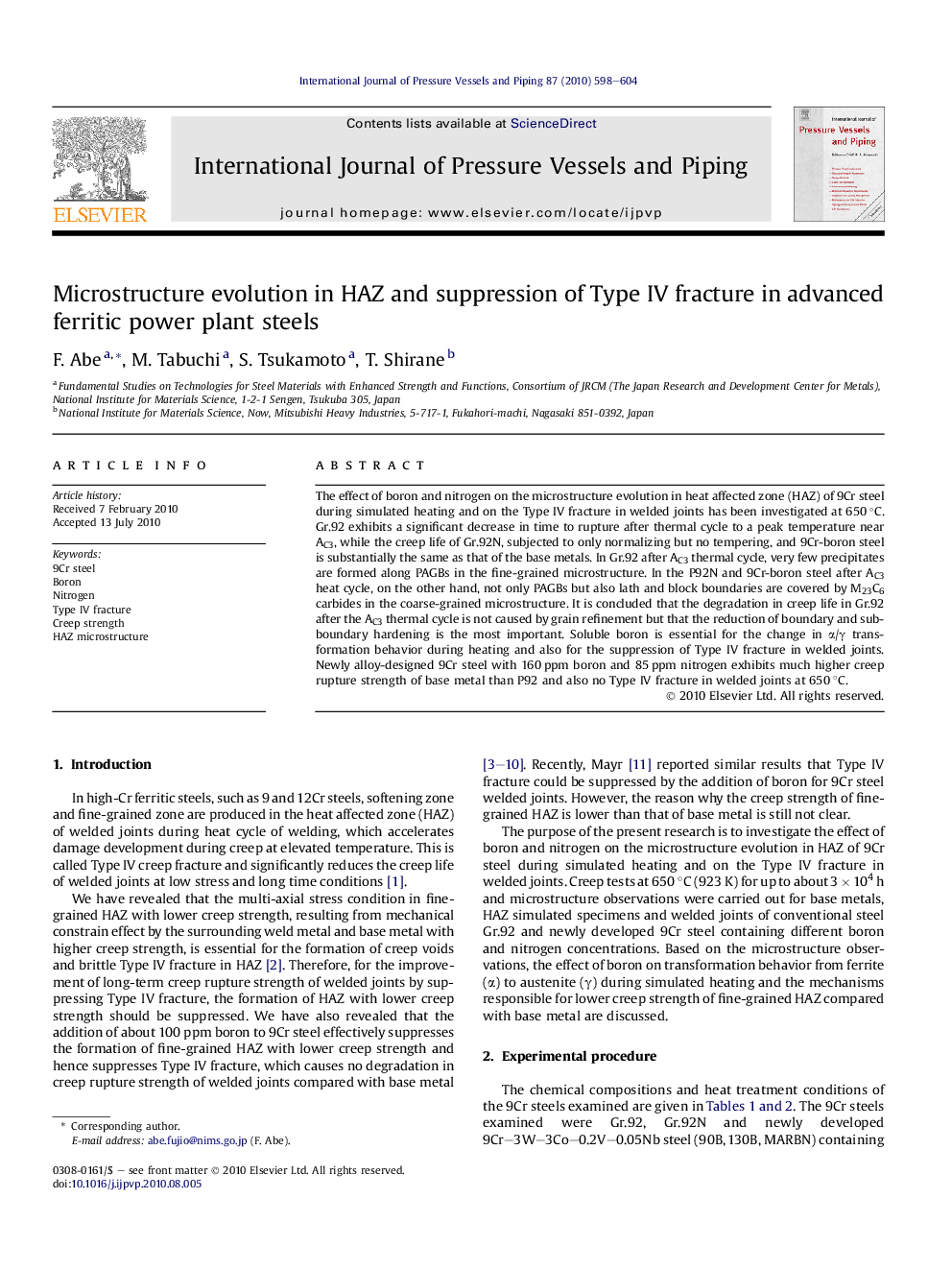| کد مقاله | کد نشریه | سال انتشار | مقاله انگلیسی | نسخه تمام متن |
|---|---|---|---|---|
| 787884 | 1466105 | 2010 | 7 صفحه PDF | دانلود رایگان |

The effect of boron and nitrogen on the microstructure evolution in heat affected zone (HAZ) of 9Cr steel during simulated heating and on the Type IV fracture in welded joints has been investigated at 650 °C. Gr.92 exhibits a significant decrease in time to rupture after thermal cycle to a peak temperature near AC3, while the creep life of Gr.92N, subjected to only normalizing but no tempering, and 9Cr-boron steel is substantially the same as that of the base metals. In Gr.92 after AC3 thermal cycle, very few precipitates are formed along PAGBs in the fine-grained microstructure. In the P92N and 9Cr-boron steel after AC3 heat cycle, on the other hand, not only PAGBs but also lath and block boundaries are covered by M23C6 carbides in the coarse-grained microstructure. It is concluded that the degradation in creep life in Gr.92 after the AC3 thermal cycle is not caused by grain refinement but that the reduction of boundary and sub-boundary hardening is the most important. Soluble boron is essential for the change in α/γ transformation behavior during heating and also for the suppression of Type IV fracture in welded joints. Newly alloy-designed 9Cr steel with 160 ppm boron and 85 ppm nitrogen exhibits much higher creep rupture strength of base metal than P92 and also no Type IV fracture in welded joints at 650 °C.
Journal: International Journal of Pressure Vessels and Piping - Volume 87, Issue 11, November 2010, Pages 598–604